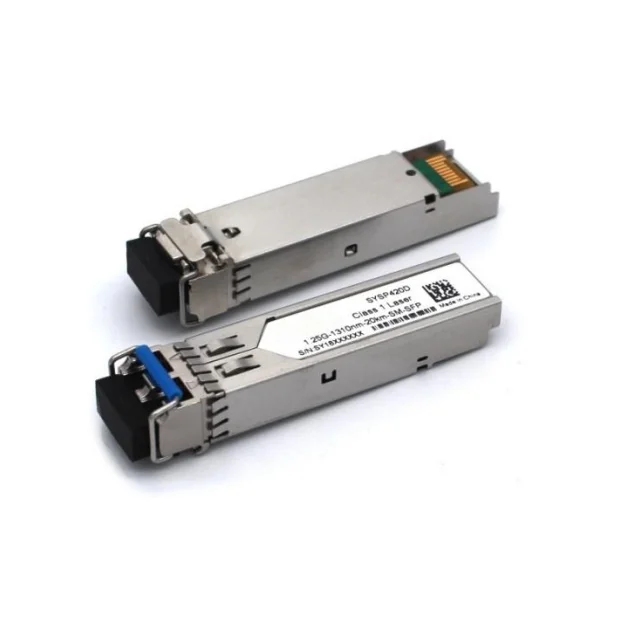- This topic is empty.
-
AuthorPosts
-
In modern communication networks, optical modules play a vital role. As a medium that converts electrical signals into optical signals and transmits them between different devices, the compatibility of optical modules directly affects the stability, efficiency and cost of the network. This article aims to deeply explore the compatibility issues of optical modules, analyze the factors that affect compatibility, and how to solve compatibility issues to ensure efficient operation of the network.
First, it is crucial to understand the basic concepts of optical modules. The optical module is a pluggable optoelectronic device used to convert electrical signals into optical signals for data transmission through optical fibers. They are widely used in data centers, metropolitan area networks, access networks, and other long-distance communication systems. There are various types of optical modules, including SFP, SFP+, QSFP, CFP, etc. Each type has its specific size, power requirements and functional characteristics.

Optical module compatibility issues usually involve the following aspects:
Hardware compatibility: The optical module must match the interface of the switch, router or other network device. For example, SFP+ optical modules need to be compatible with devices that support SFP+ slots. The shape and pin assignment of the hardware interface and the size of the module are important factors in determining compatibility.
Wavelength compatibility: The wavelength of light emitted by the optical module must be compatible with the optical fiber line and other optical modules in the network. For example, if one end is using a 1310nm wavelength module, the other end must also use the same or compatible wavelength, otherwise communication will not be established.
Protocol compatibility: The optical module must support the communication protocols used in the network, such as Ethernet, Fiber Channel, or other protocols. Differences in protocols can lead to incompatibilities in data transmission, so choosing the right module is crucial to keeping the network running smoothly.
Functional compatibility: Optical modules may have different functional features, such as digital diagnostic monitoring (DDM) or bidirectional forwarding detection (BFD). These functions must be integrated with network management systems to ensure that network status can be properly monitored and maintained.
Software compatibility: Some advanced optical modules may require specific driver or firmware versions to be compatible with network devices. Software updates and regular checks of compatibility lists are critical steps to ensure that modules are compatible with the device.
Strategies to solve optical module compatibility issues include:
Read the technical specifications carefully: When selecting an optical module, you should read the product's technical specifications in detail to understand its compatibility information. This includes interface type, supported wavelengths, protocols and functional features, etc.
Consult the supplier: Working with a reputable optical module supplier and seeking their professional advice can help determine the best optical module for your network equipment. Vendors often provide detailed product compatibility lists and technical support.
Conduct field testing: Testing a newly purchased optical module in an actual network environment can verify its compatibility with existing equipment. This helps identify potential issues and resolve them before large-scale deployment.
Pay attention to standards and specifications: Following international standards and industry specifications, such as IEEE standards, can ensure that optical modules have good versatility and compatibility.
Consider future upgrades: When selecting optical modules, consider future network upgrades and technology developments. Choosing modules that can adapt to new technologies and standards can reduce compatibility issues during future upgrades.
In summary, the compatibility issue of optical modules is a key consideration in network design and maintenance. By understanding the factors that affect compatibility and adopting appropriate strategies to ensure that the selected optical modules are compatible with network equipment, you can maximize the performance and reliability of your network. With the continuous advancement of technology, the compatibility of optical modules will also continue to develop, providing a more solid foundation for high-speed network transmission.
How to choose a high-quality optical module manufacturer
Optical Module Installation and Maintenance Guide
The leader in optical module manufacturing: providing you with excellent solutions
Revealing the key factors affecting the transmission speed of optical modules
Performance indicators of optical modules: key parameter analysis and application discussion
Explore optical module transmission distance and rate
Explore different types of optical module interfaces
Optical modules: From origin to future, explore the development history of optoelectronic devices
Optical module: core composition and structural analysis of optical communication system
Optical modules application guide: 7 key considerations to ensure smooth communication
The relationship between optical module power and optical communication performance
Core components of optical modules and their role in optical communication systems
Transmission rate and transmission distance of optical modules
Analyze the importance of performance parameters of optical modules in optical communication systems
Optical module heat dissipation design: key technology to ensure performance and lifespan
-
AuthorPosts